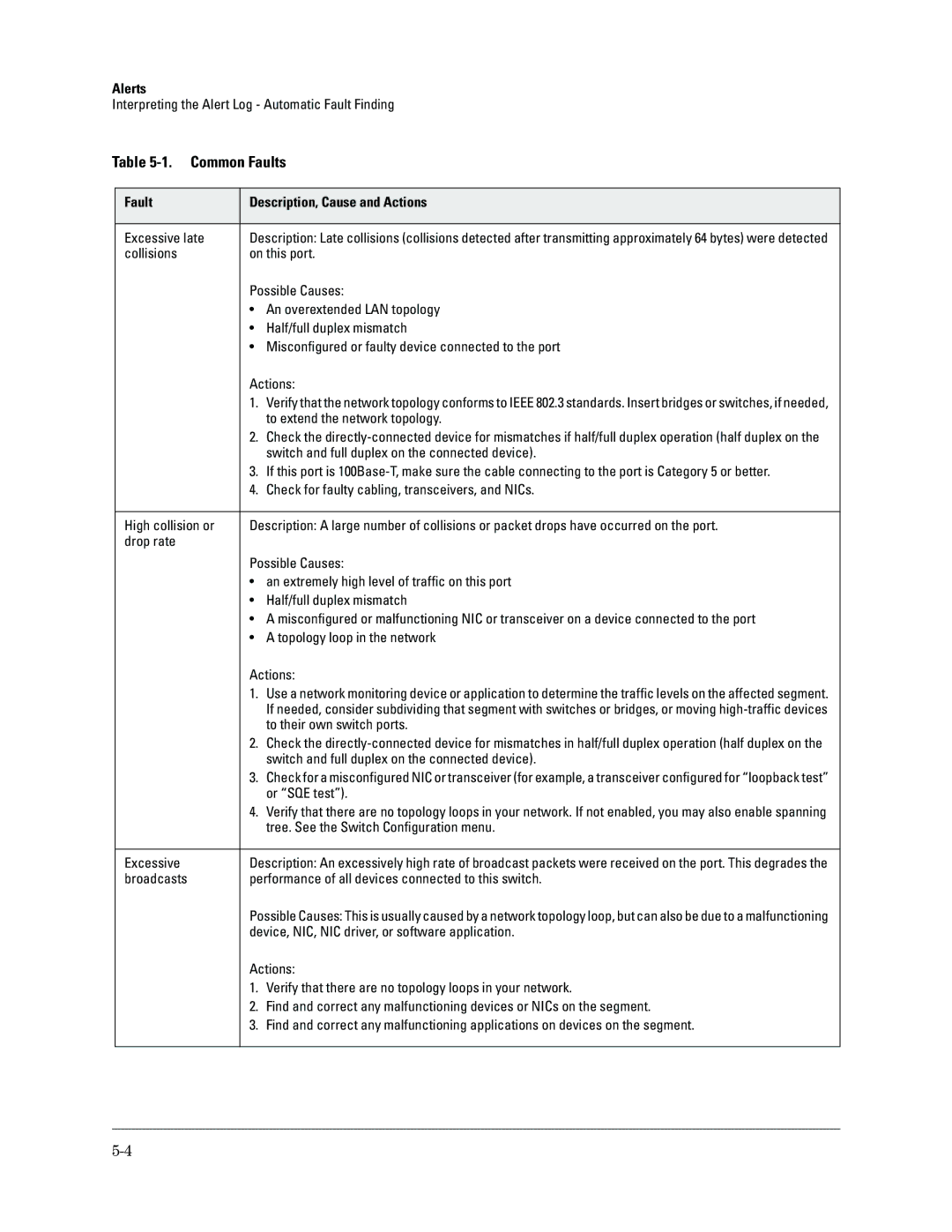Alerts
Interpreting the Alert Log - Automatic Fault Finding
Table 5-1. Common Faults
Fault | Description, Cause and Actions | |
|
| |
Excessive late | Description: Late collisions (collisions detected after transmitting approximately 64 bytes) were detected | |
collisions | on this port. | |
| Possible Causes: | |
| • | An overextended LAN topology |
| • | Half/full duplex mismatch |
| • | Misconfigured or faulty device connected to the port |
| Actions: | |
| 1. | Verify that the network topology conforms to IEEE 802.3 standards. Insert bridges or switches, if needed, |
|
| to extend the network topology. |
| 2. | Check the |
|
| switch and full duplex on the connected device). |
| 3. | If this port is |
| 4. | Check for faulty cabling, transceivers, and NICs. |
|
| |
High collision or | Description: A large number of collisions or packet drops have occurred on the port. | |
drop rate |
|
|
| Possible Causes: | |
| • | an extremely high level of traffic on this port |
| • | Half/full duplex mismatch |
| • | A misconfigured or malfunctioning NIC or transceiver on a device connected to the port |
| • | A topology loop in the network |
| Actions: | |
| 1. | Use a network monitoring device or application to determine the traffic levels on the affected segment. |
|
| If needed, consider subdividing that segment with switches or bridges, or moving |
|
| to their own switch ports. |
| 2. | Check the |
|
| switch and full duplex on the connected device). |
| 3. | Check for a misconfigured NIC or transceiver (for example, a transceiver configured for “loopback test” |
|
| or “SQE test”). |
| 4. | Verify that there are no topology loops in your network. If not enabled, you may also enable spanning |
|
| tree. See the Switch Configuration menu. |
|
| |
Excessive | Description: An excessively high rate of broadcast packets were received on the port. This degrades the | |
broadcasts | performance of all devices connected to this switch. | |
| Possible Causes: This is usually caused by a network topology loop, but can also be due to a malfunctioning | |
| device, NIC, NIC driver, or software application. | |
| Actions: | |
| 1. | Verify that there are no topology loops in your network. |
| 2. | Find and correct any malfunctioning devices or NICs on the segment. |
| 3. | Find and correct any malfunctioning applications on devices on the segment. |
|
|
|
